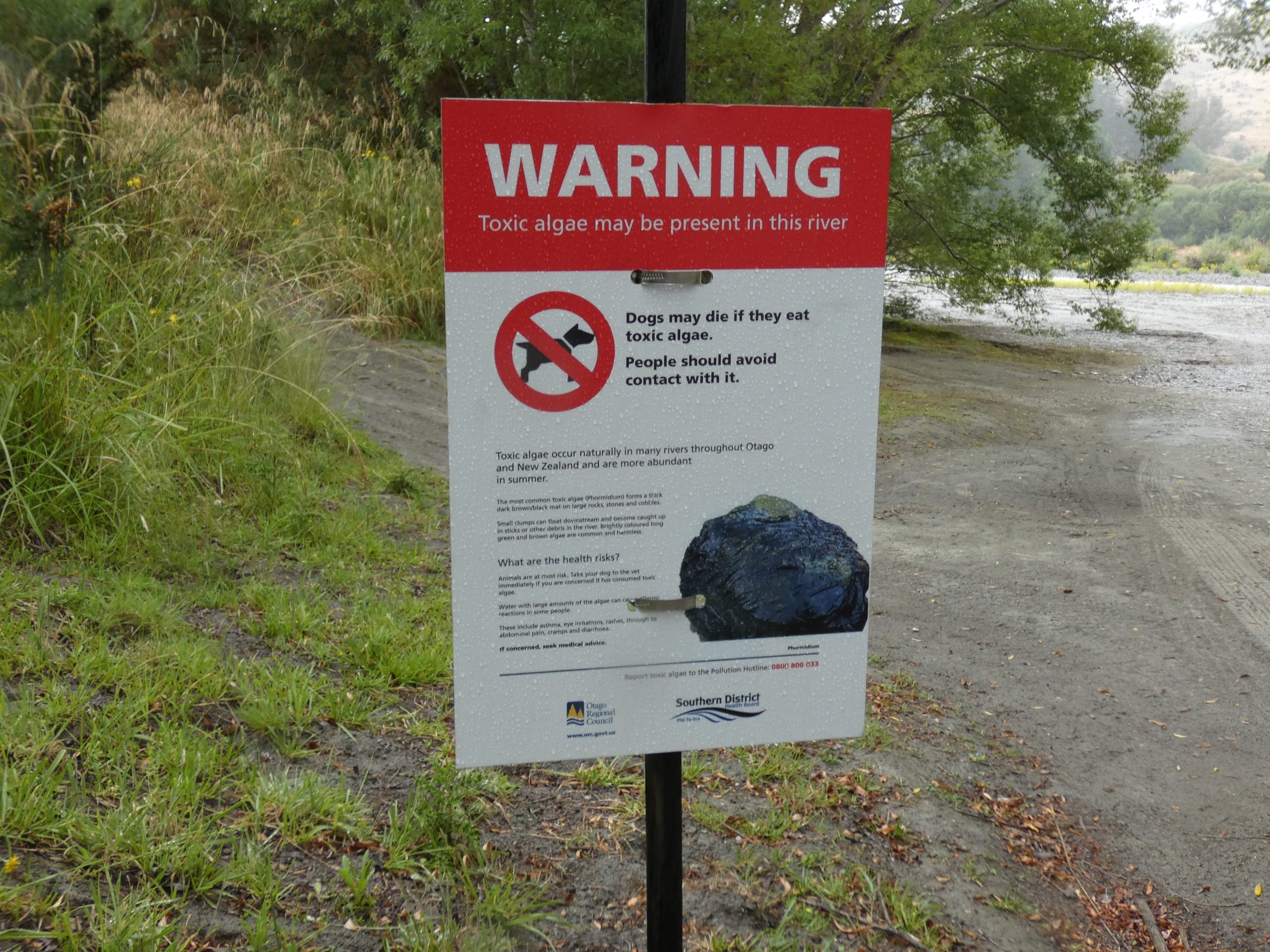The death of three dogs in Alexandra at the weekend was not linked to cyanobacteria toxic algae, according to the Otago Regional Council.
A social media post on Sunday, which was shared several times, described the owner spending a long night with the vet but all three dogs died. The poster said the dogs had eaten something on the Manuherikia River bank at Galloway before becoming violently ill.
However, Otago Regional Council (ORC) scientist — water quality Helen Trotter said a thorough assessment on Monday morning had found no sign of toxic algae at that site or at popular access points downstream. The observations were consistent with recent results of routine monitoring at Shaky Bridge and at Galloway, which had not found potentially toxic algae to be present.
With no toxic algae visible at Galloway Rd it was unlikely that toxic algae at the site caused the dogs’ deaths, she said.
However, the toxic algae had been found at Butchers Dam, south of Alexandra, and warning signs had been posted there since the beginning of the month. Warning signs were also in place at Ophir.
Algal blooms were more common during the summer months, when low rainfall, warm temperatures, the right level of nutrients and more sunlight created an environment in which it thrived, Ms Trotter said.
Exposure to toxic algae could result in serious illness and could be fatal to both humans and animals. Dogs should be kept on a leash to steer them away from the water and riverbanks. One teaspoon could be enough to be fatal.
Known sites for toxic algae in Central Otago included the Cardrona, Hawea and Manuherikia Rivers as well as Butchers Dam.
ORC had been testing water in popular swimming sites since December 4. The latest water quality results were available at lawa.org.nz/swim (Land Air Water Aotearoa)
The latest toxic algae sightings could be viewed at www.orc.govt.nz/ toxicalgaesightings
Anyone seeing what they believed was a toxic algae bloom should call the ORC Pollution Hotline 0800 800 033.





